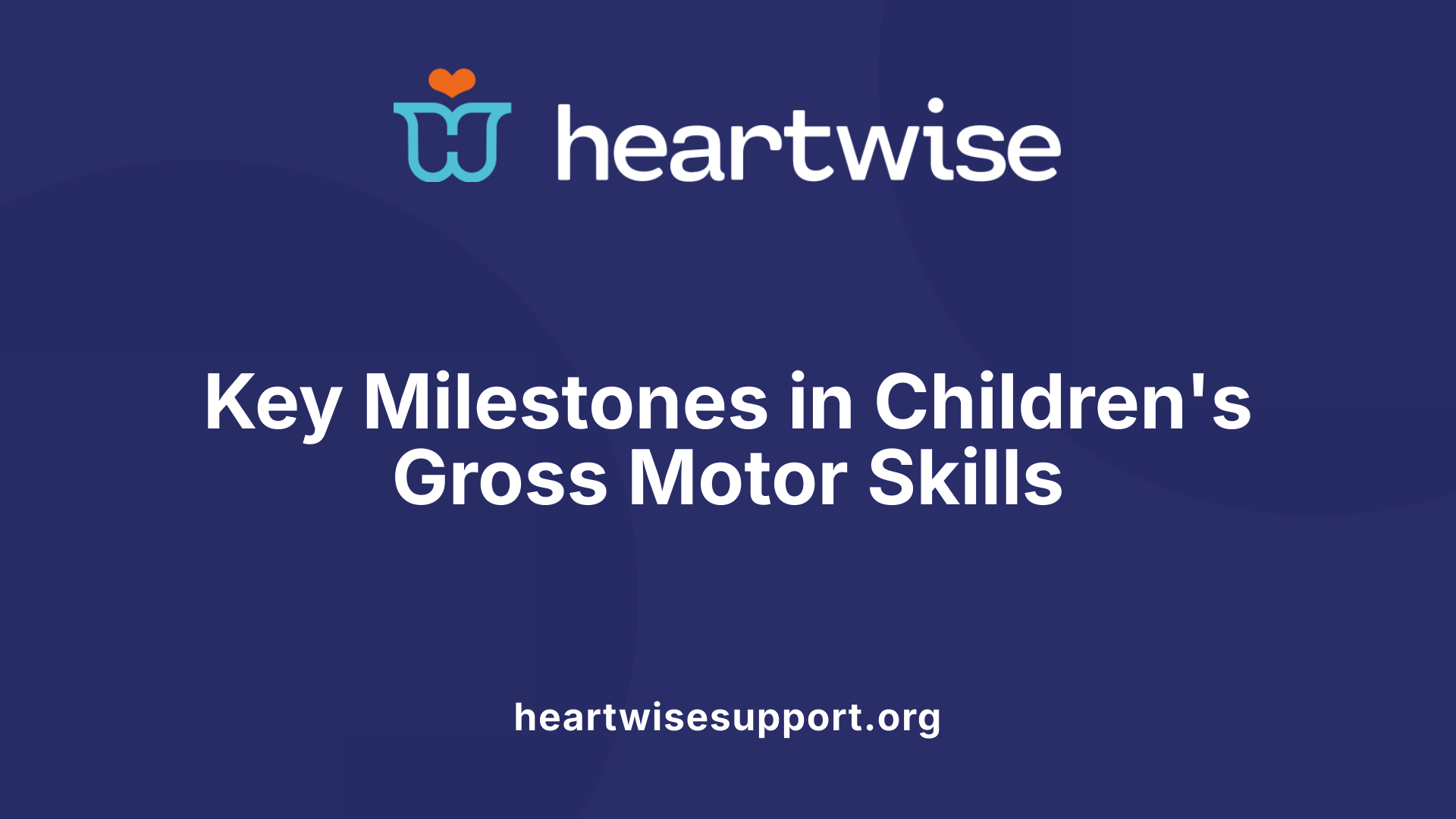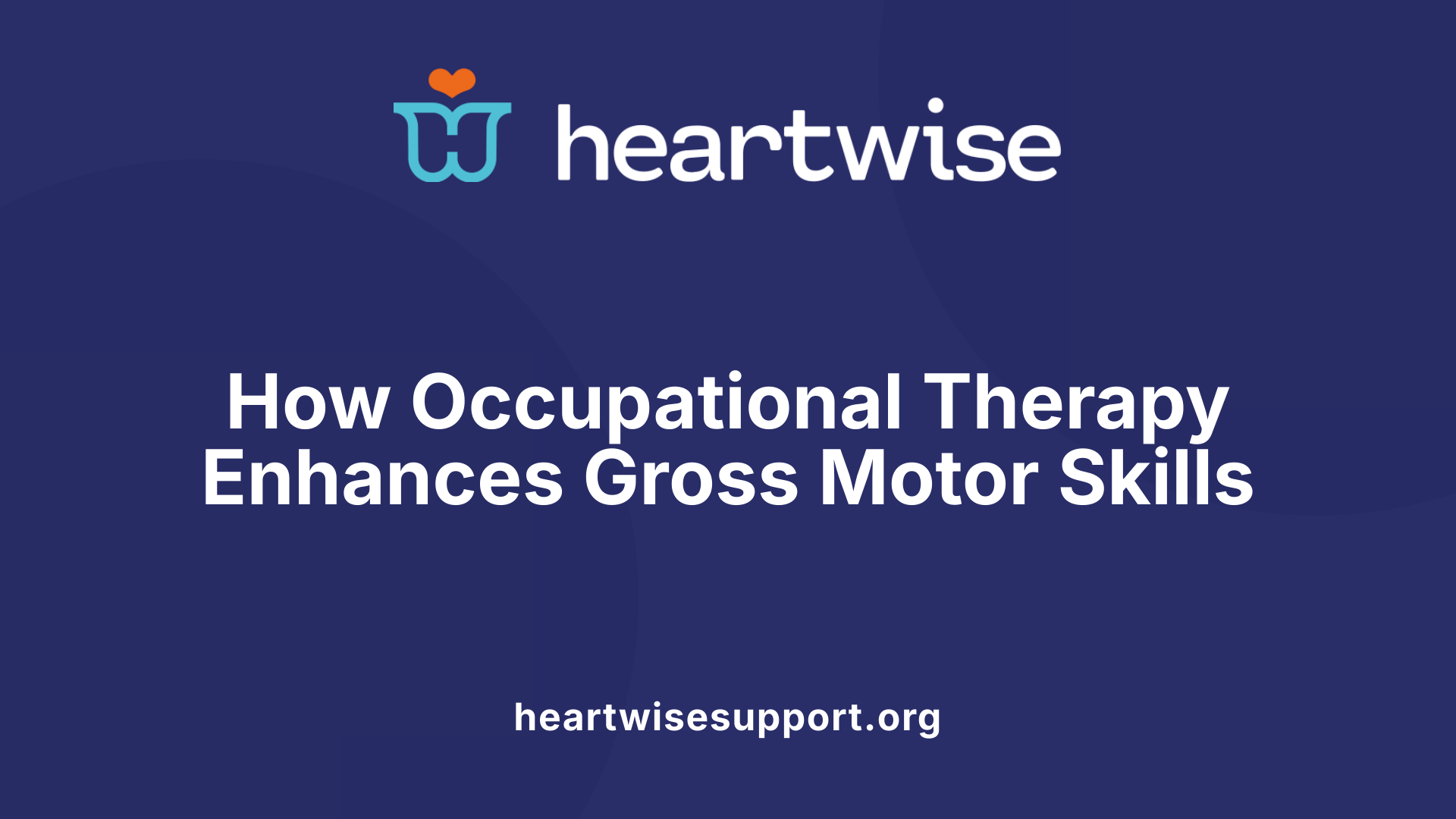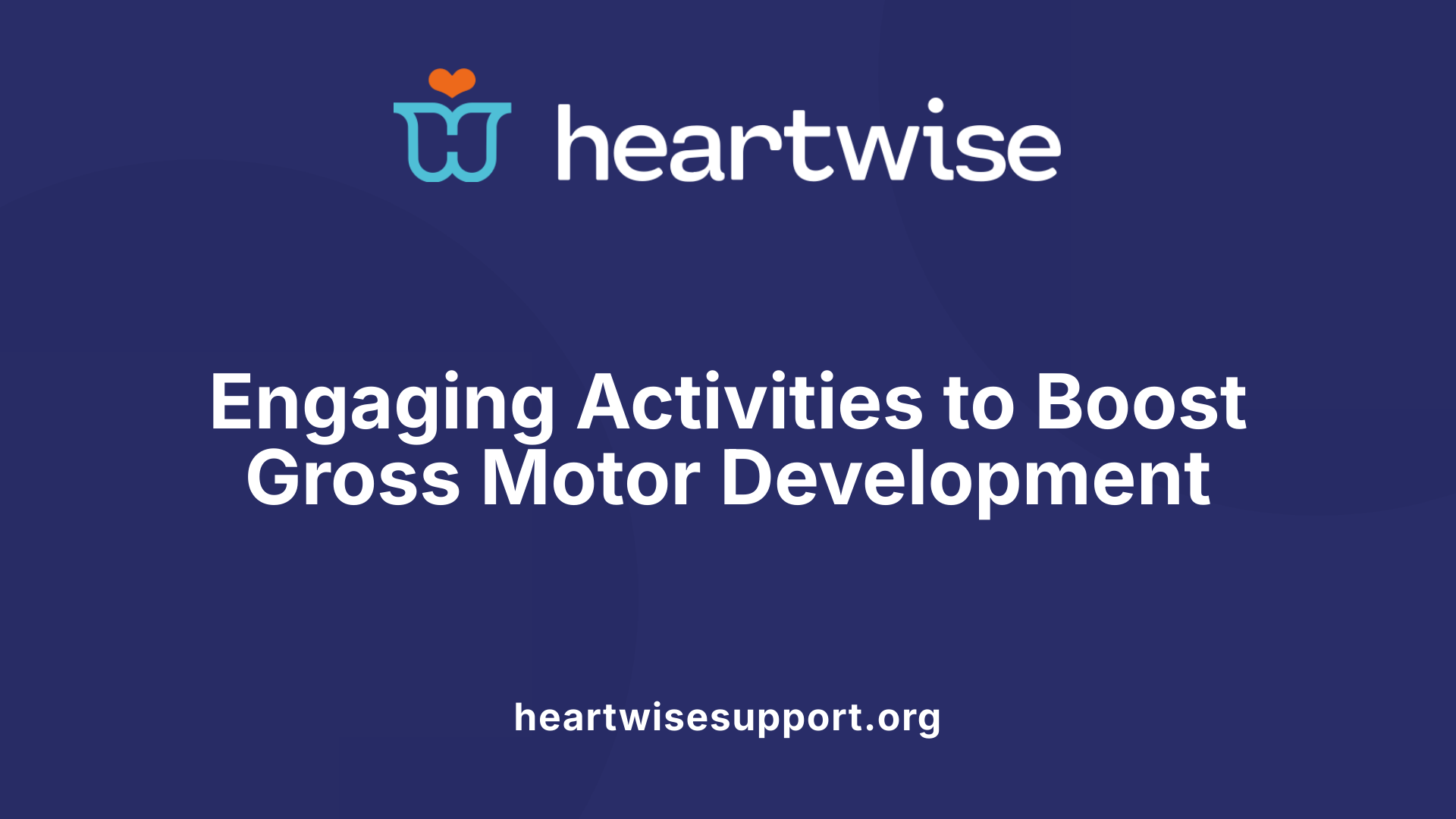Understanding the Importance of Gross Motor Skills in Childhood Development
Gross motor skills are foundational to a child's overall growth, influencing everyday activities, academic success, social participation, and independence. Occupational therapy plays a crucial role in nurturing these large muscle movements, especially in children facing developmental delays or difficulties. This article explores the key concepts involved in gross motor development, the benefits of occupational therapy, assessment methods, and practical strategies for promoting optimal motor skills in children.
Core Concepts and Developmental Milestones in Gross Motor Skills

What are the key concepts involved in gross motor skill development?
Gross motor skill development hinges on several fundamental concepts that ensure the effective control and coordination of large muscles used for movement. These include balance, which allows children to maintain stability during activities; coordination, enabling the smooth execution of complex movements; muscle strength, necessary for tasks like jumping or climbing; and body awareness, which helps children understand and control their body positions in space.
Monitoring these elements throughout a child's growth is crucial. From infancy, where activities like rolling and reaching are early indicators, to childhood, where skills such as hopping, running, and riding bikes are developed, each milestone marks progress in these domains.
Play activities and sensory input significantly influence this development. Engaging games such as obstacle courses, ball skills, or swimming build strength, enhance coordination, and promote sensory integration. These activities stimulate the nervous system, bones, muscles, and nerves to work together effectively, supporting motor planning, reaction times, and automatic movements.
Recognizing the importance of early milestones—such as sitting without support, crawling, standing, and walking—allows caregivers or therapists to identify any delays early on. Encouraging age-appropriate activities helps children refine their abilities and fosters confidence. Consistent, playful practice, combined with sensory-rich experiences, underpins healthy gross motor development.
Overall, understanding these core concepts enables a comprehensive approach to nurturing motor skills, supporting physical development, and preventing or addressing potential delays.
Role and Benefits of Occupational Therapy in Gross Motor Development

How does occupational therapy support children with gross motor delays or difficulties?
Occupational therapy (OT) provides specialized interventions aimed at boosting gross motor skills such as crawling, walking, running, hopping, and jumping. Children who experience delays—such as poor coordination, balance problems, or muscle tone issues—can benefit from targeted therapy activities. Therapists utilize methods like core strengthening exercises, sensory integration techniques, and breaking down complex tasks into manageable steps, making these skills more achievable.
OT also emphasizes building foundational capabilities like muscle strength, postural control, motor planning, and body awareness. These elements are critical for a child's ability to perform daily activities independently and participate confidently in school and social settings. By addressing underlying challenges, occupational therapy helps children overcome obstacles that hinder their participation in physical and social activities.
How do interventions like core strengthening, sensory integration, and task breakdowns improve gross motor skills?
Core strengthening focuses on developing a strong midsection, which is essential for overall stability and control during movement. Activities like animal walks, crab holds, and balancing exercises reinforce trunk muscles, improving posture and balance.
Sensory integration involves activities that help children process and respond to sensory information effectively. Using tactile play, swinging, or textured objects, therapists help children manage sensitivities and enhance motor responses.
Task breakdowns involve deconstructing complex movements into smaller, easier steps. For example, instead of jumping all at once, a child might practice hopping on one foot or stepping over obstacles sequentially. This approach makes challenging movements more approachable, encouraging mastery through success.
How does occupational therapy enhance confidence and independence?
As children develop their gross motor abilities through tailored activities, they experience increased confidence in their physical skills. Mastering new movements fosters a sense of achievement, which motivates further participation.
OT also promotes independence by teaching children strategies to manage daily routines—like dressing, grooming, and navigating playground equipment—with increased ease. This boost in self-sufficiency positively impacts self-esteem and social interactions.
Supporting overall development through occupational therapy
Beyond physical improvements, occupational therapy supports emotional and social growth. Engaging in group activities and play helps children develop social skills, learn teamwork, and share successes with peers. Addressing gross motor challenges early can prevent secondary issues like low self-esteem or social withdrawal.
Overall, occupational therapy nurtures a child's physical capabilities and emotional resilience, fostering a foundation for lifelong confidence and independence in movement and daily life tasks.
Assessment and Identification of Gross Motor Delays

How do occupational therapists assess gross motor development in children?
Occupational therapists use a variety of tools and observational techniques to evaluate a child's gross motor skills. Standardized assessment instruments are often employed to ensure an accurate evaluation of motor abilities.
One of the most common assessment tools is the Gross Motor Function Measure (GMFM). This scale assesses specific motor functions such as sitting, crawling, standing, and walking across five key domains. The GMFM has been shown to be reliable and valid, especially for children with cerebral palsy, Down syndrome, and brain injury.
Another important tool is the CHAMPS Motor Skills Protocol (CMSP), designed specifically for preschool children. It allows therapists to observe and measure locomotor and object control skills through a series of tasks. The CMSP provides high reliability and validity, making it suitable for field settings like preschools.
In addition to these, therapists might use assessments like the Bruininks-Oseretsky Test of Motor Proficiency (BOT-2), the Movement Assessment Battery for Children (MABC-2), and the Peabody Developmental Motor Scales (PDMS-2). These tests include structured tasks and scoring systems to evaluate different aspects of gross motor skills.
Assessment usually involves behavioral scoring, multiple trials, and direct observation during play or task performance. By analyzing these observations and scores, therapists can identify motor delays, determine their severity, and monitor progress over time.
What are early signs of gross motor developmental delays?
Children with gross motor delays may exhibit signs such as late achievement of developmental milestones like sitting, crawling, or walking.
Signs such as poor coordination, unsteady gait, frequent falls, difficulty with balance and posture, and clumsiness are common early indicators.
Other signs include low endurance during physical activity, poor muscle tone, stiff or awkward movements, and reluctance to participate in physical play.
Conditions like cerebral palsy, autism spectrum disorder, Down syndrome, or developmental coordination disorder often present with these initial signs.
Detecting these signs early allows for timely intervention, such as occupational or physical therapy, to support improved motor outcomes.
Conditions associated with gross motor delays
Many developmental and neurological conditions are linked to gross motor skill delays.
These include conditions like cerebral palsy, Down syndrome, autism spectrum disorder, attention deficit hyperactivity disorder (ADHD), and developmental coordination disorder.
Children with premature birth or neurological impairments might also experience challenges in motor development.
Recognizing the signs and conducting proper assessments are crucial steps in providing effective therapy and support, helping children develop confidence and independence through improved gross motor skills.
Activities and Exercises to Promote Gross Motor Skills
 Occupational therapy offers a wide range of activities aimed at improving gross motor skills by encouraging large muscle movements and coordination. Recommended exercises include navigating obstacle courses, practicing balance on beams or wobbly boards, and engaging in hopping, skipping, and jumping activities. These movements help enhance muscle strength, control, and overall body awareness.
Occupational therapy offers a wide range of activities aimed at improving gross motor skills by encouraging large muscle movements and coordination. Recommended exercises include navigating obstacle courses, practicing balance on beams or wobbly boards, and engaging in hopping, skipping, and jumping activities. These movements help enhance muscle strength, control, and overall body awareness.
Strengthening control of large muscle groups can be achieved through fun play activities like animal walks, wheelbarrow walking, and crawling through tunnels. These fun movements not only build muscular endurance but also promote motor planning and bilateral coordination.
Use of specialized therapy equipment is common to facilitate muscle development. Trampolines, therapy balls, scooter boards, and wobble boards are excellent tools that encourage dynamic movements, improve balance, and develop sensory processing abilities.
Dynamic activities such as balloon volley, water-based activities like swimming, and outdoor play in playgrounds enhance coordination and automatic motor responses. Engaging in these rhythmic and lively movements helps children hone their ability to cross the midline, improve postural stability, and strengthen core muscles.
Incorporating these exercises into daily routines can significantly support gross motor development. They help children achieve milestones such as standing, walking, jumping, and running more confidently. Tailoring activities to the child's specific needs ensures steady progress and fosters motor skills that are crucial for both everyday functions and participation in sports and recreational activities.
Promoting Gross Motor Development through Daily Routines and Play
What are practical ways to promote gross motor development in children?
Supporting children’s gross motor skills involves creating opportunities for movement integrated into daily routines and play. Engage children in active outdoor activities like running, jumping, climbing, and participating in sports, all of which strengthen large muscle groups and improve coordination.
Incorporate fun exercises such as obstacle courses, hopscotch, dance, swimming, and playground games to challenge various movements and refine skills. These fun challenges encourage balance, strength, and motor planning.
Regular practice of gross motor activities is essential. Encourage activities like crawling, walking on uneven surfaces, balancing on beams or tape lines, and riding tricycles or bikes to promote progression from simple to more complex movements.
Adopt a multi-sensory approach by integrating activities that stimulate sensory processing along with motor skills. This includes using textured objects, balance tools, or sensory-rich environments, which help develop muscle endurance and coordination.
Children benefit from structured programs tailored by occupational or physical therapists, especially if there are specific delays or conditions impacting development. These professionals can guide activities that target individual needs for optimal growth.
Involving family members in daily activities ensures continuous support. Simple tasks like carrying groceries, playing catch, or doing child-friendly yoga at home keep gross motor development on track.
Overall, a combination of spontaneous play, organized activities, and professional guidance nurtures steady, enjoyable progress in gross motor skills, setting a strong foundation for further physical and functional abilities.
Conclusion: Supporting Gross Motor Development for Lifelong Well-being
Fostering gross motor skills from early childhood through targeted occupational therapy enhances physical competence, confidence, and social engagement. Early assessment and intervention are essential for identifying delays and implementing effective strategies that promote safe, functional, and enjoyable movement patterns. Incorporating a variety of fun activities, therapeutic techniques, and parental involvement maximizes developmental outcomes and sets the foundation for lifelong health and activity.
References
- [PDF] Children's Occupational Therapy GROSS MOTOR SKILLS Gross ...
- Gross Motor Coordination Activities - The OT Toolbox
- How Can An Occupational Therapist Help Develop Your Child's ...
- Gross Motor Activities - Kid Sense Child Development
- Evidence-based Interventions for Motor Skills Development in ...
- Gross motor skills: birth to 5 years | Children's Hospital of Richmond ...
- OTPT Gross Motor Therapy - Cincinnati Children's Hospital











